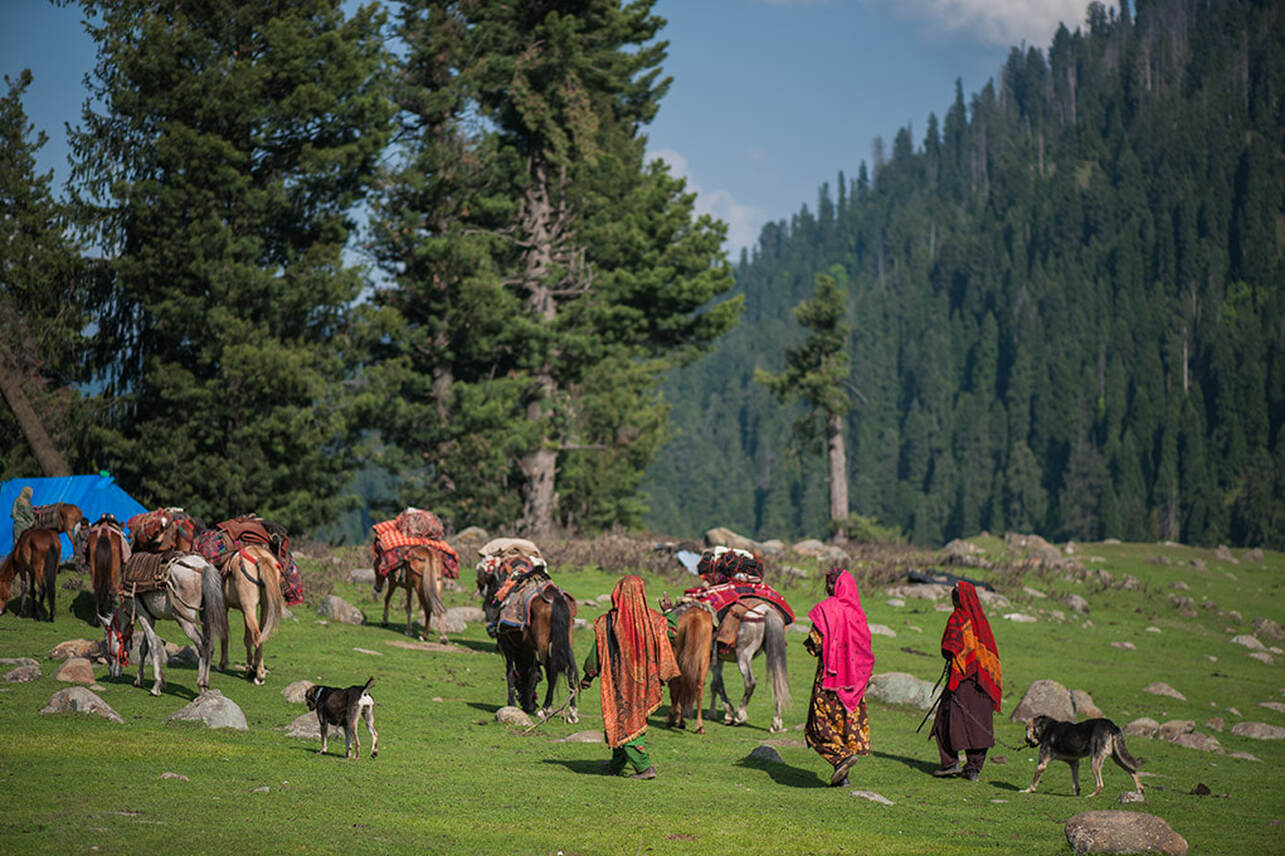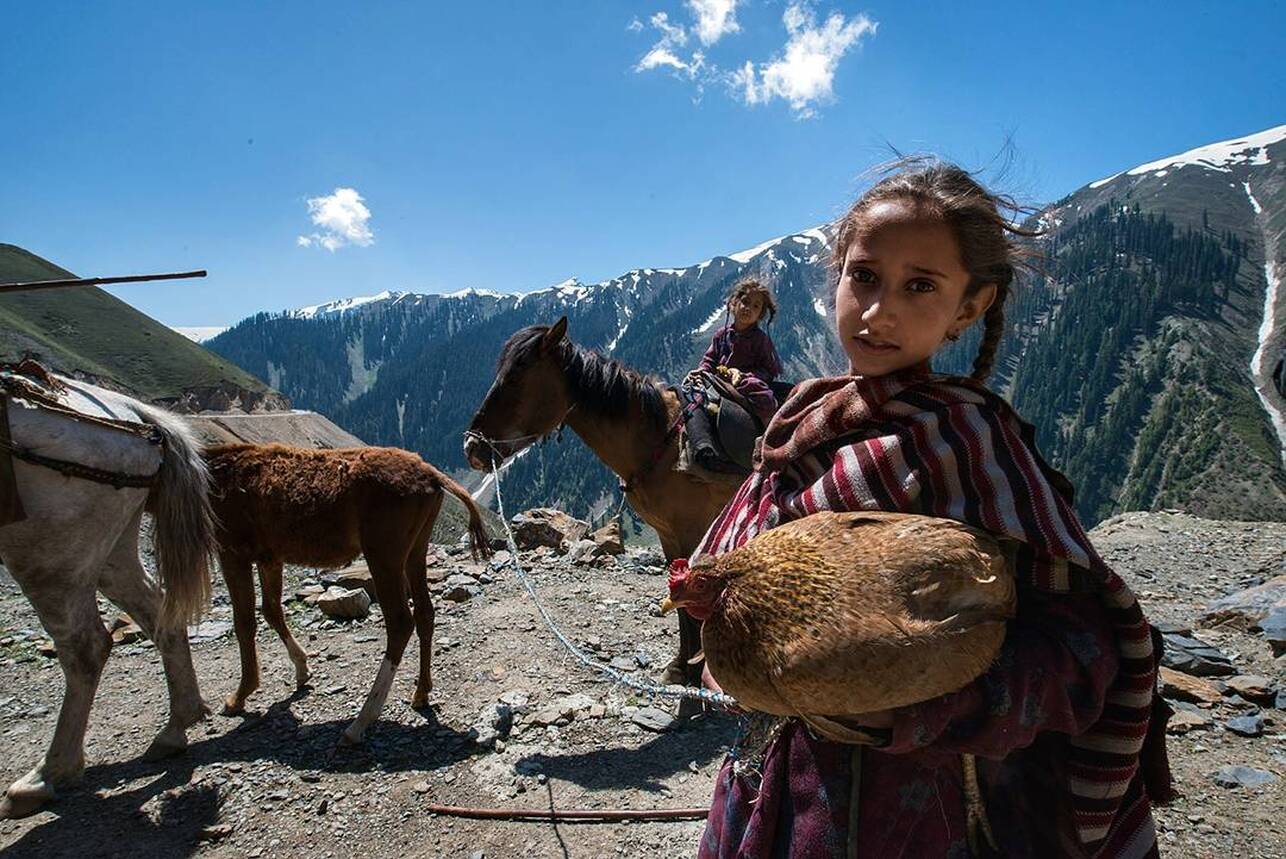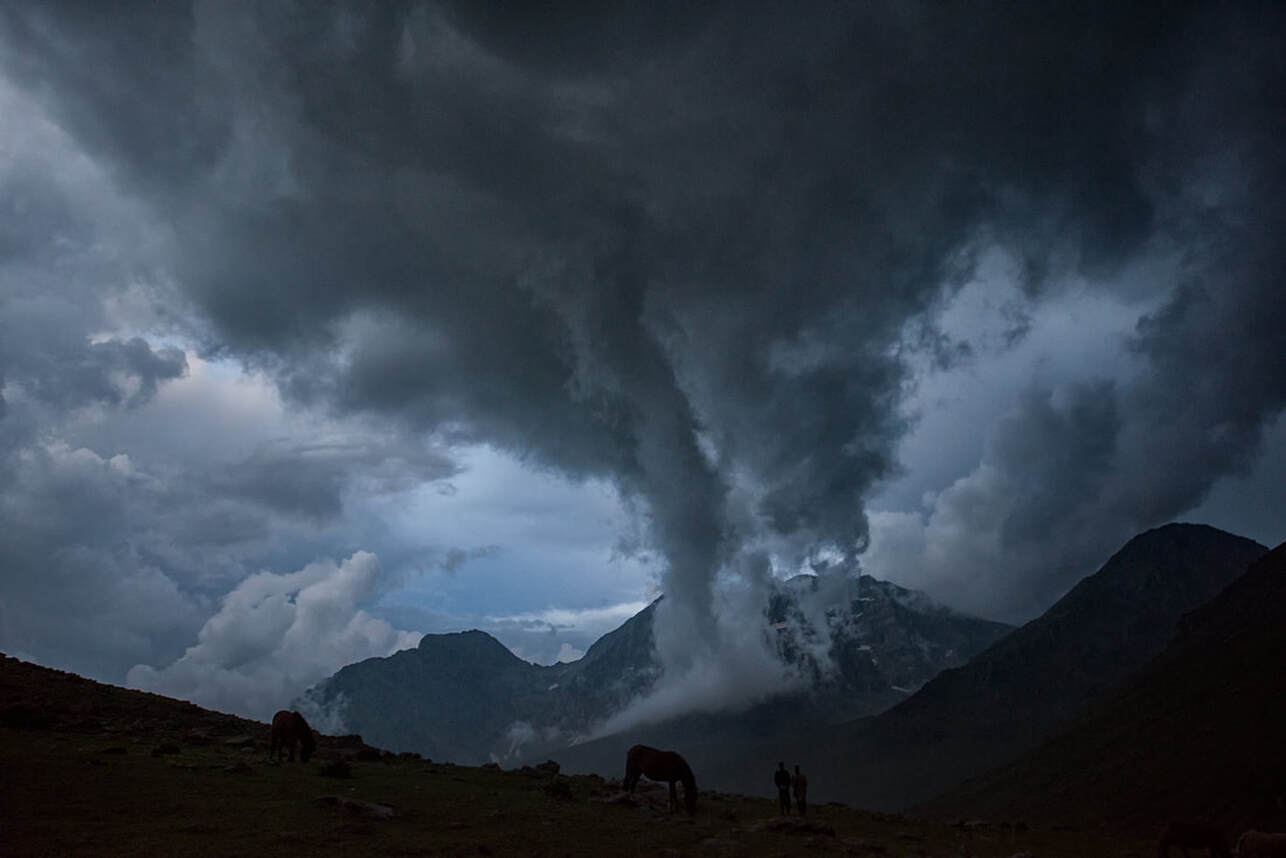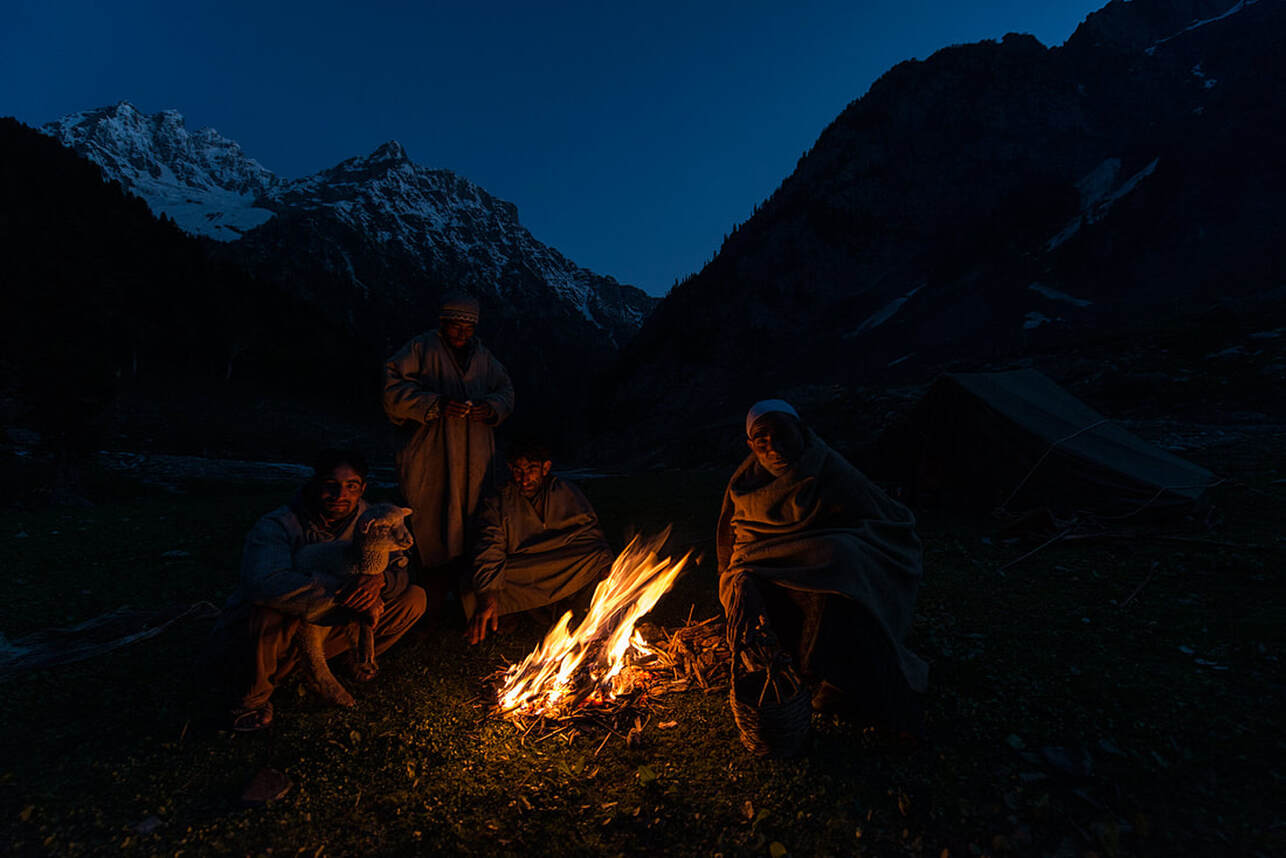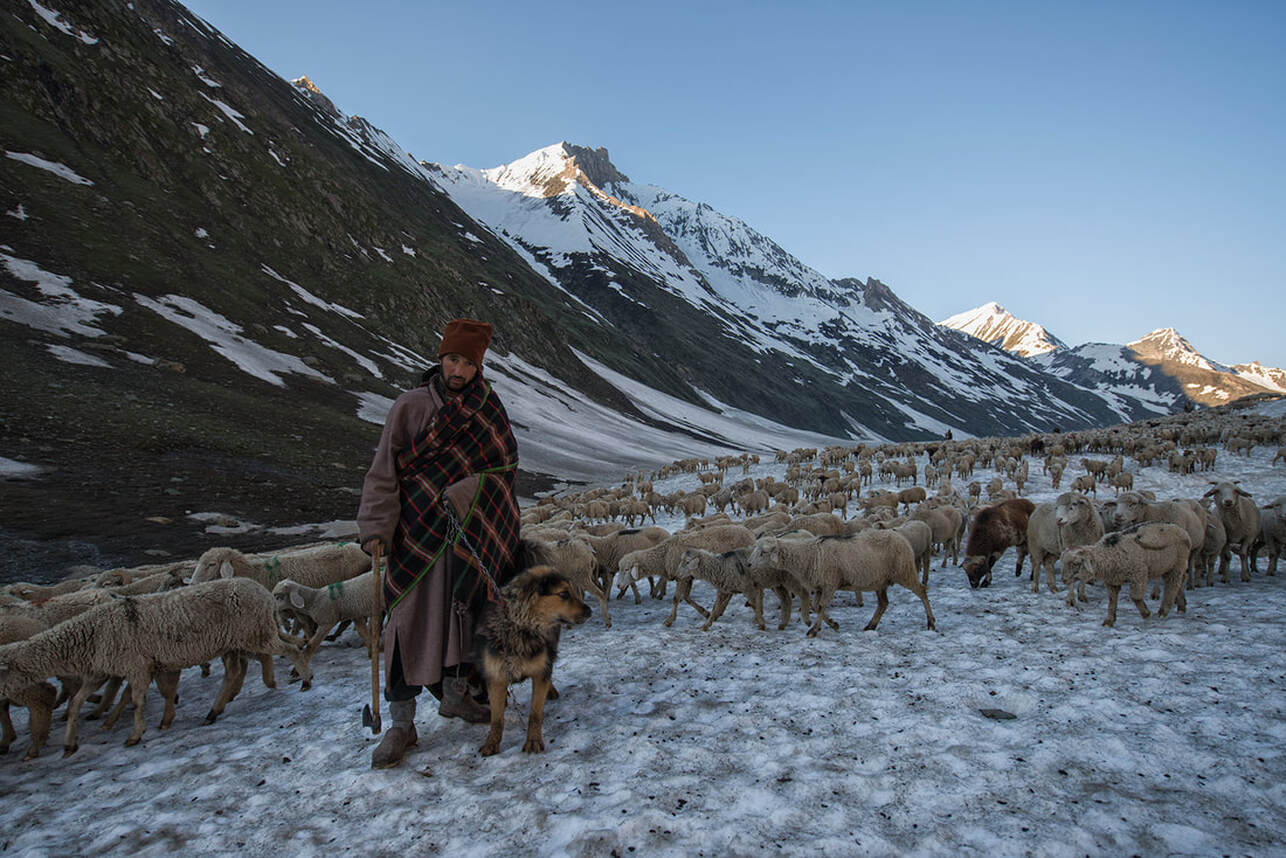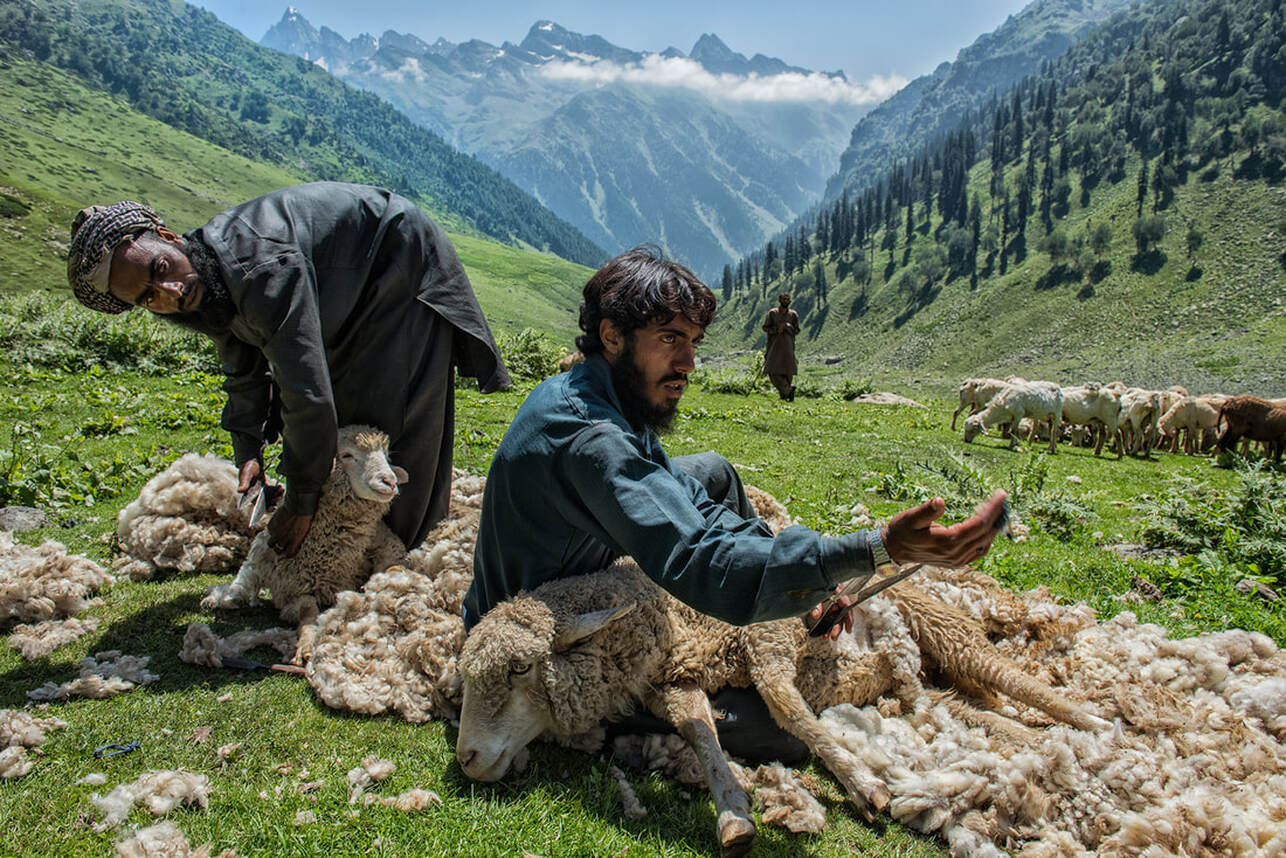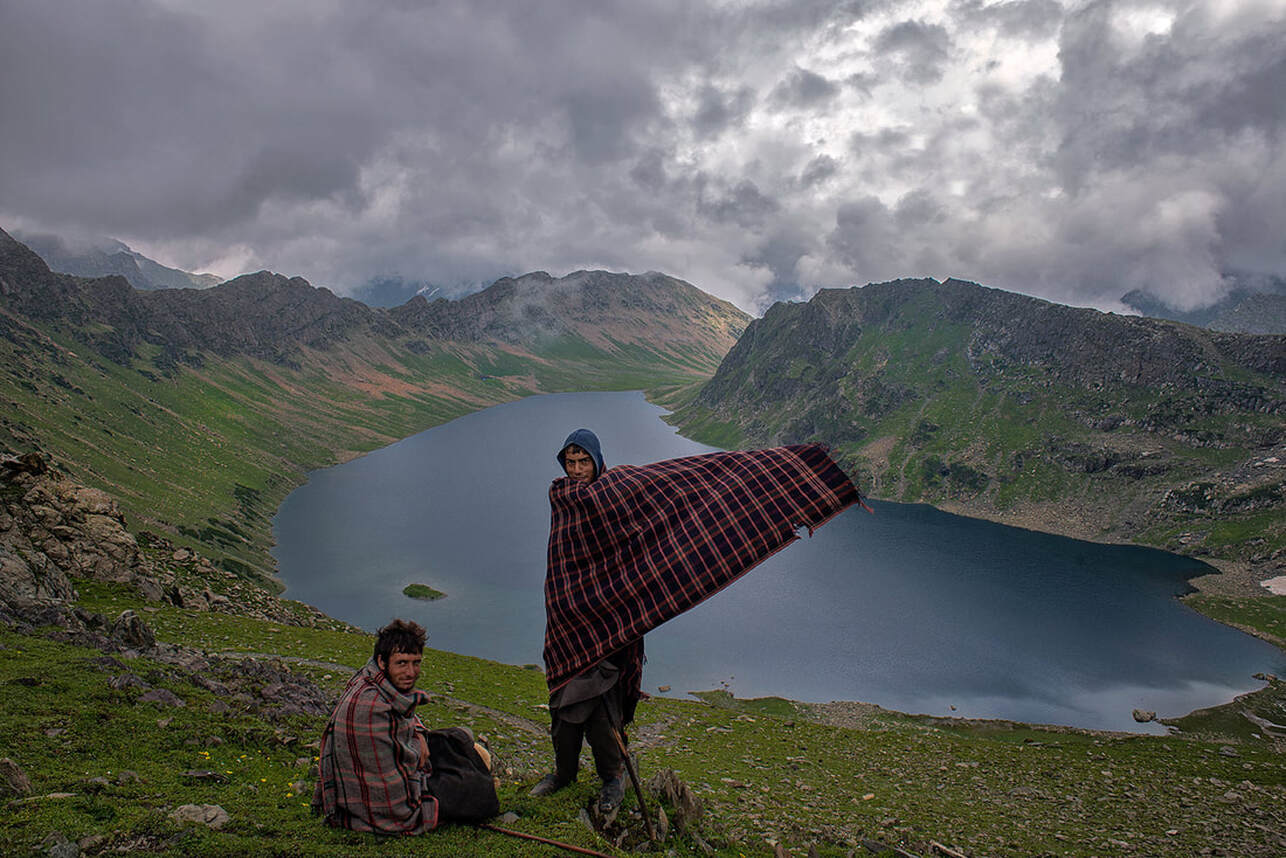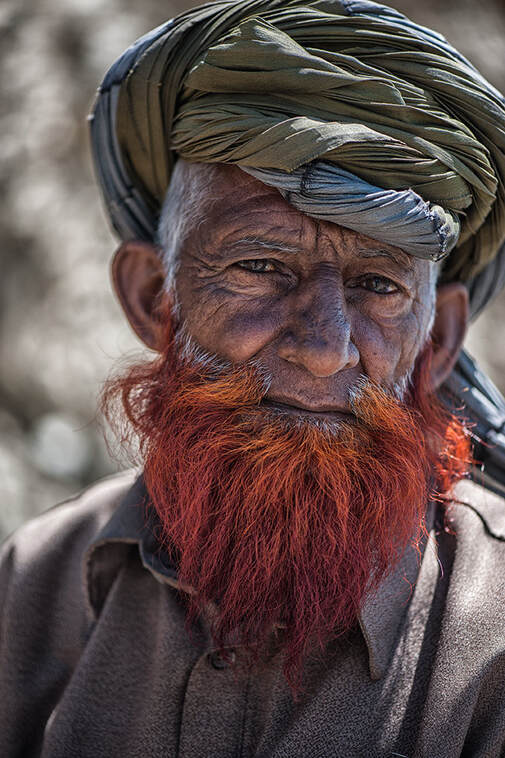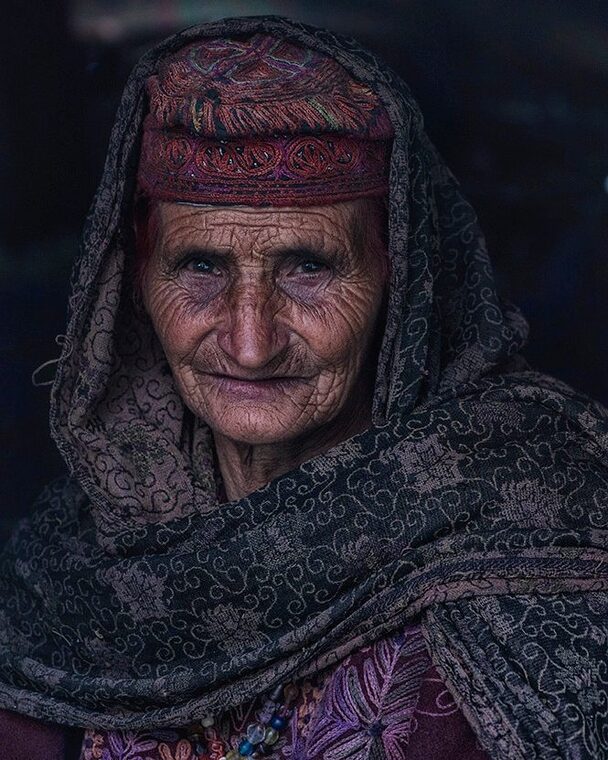Bakarwal: Purveyors of Alpine Pastures
By
Sankar Sridhar
EACH YEAR, AS THE SNOW MELTS, STREAMS BRIM OVER, AND MEADOWS RETURN TO LIFE, BAKARWAL PASTORALISTS BEGIN A LONG MARCH FROM THE LOWER REACHES OF JAMMU TO THE ALPINE PASTURES OF KASHMIR. THESE KEEPERS OF SHEEP – WHICH IS WHAT THEIR NAME TRANSLATES TO – REMAIN ON THE MOVE FROM MAY AND UNTIL AUTUMN, WHEN THE WILDERNESS IS ABLAZE IN ALL HUES OF RED YELLOW AND RUST.
Their 'territory', if we could call it that, covers a host of different terrain – from the Kashmir Valley, the Kishtwar region, Zanskar, and even Spiti. But the tribe that is divided by mountain passes during migrations, is united by their lifestyle: living in makeshift shelters, fattening their flock for winter many months away, while also protecting them from rustling and predation. While their time in the high Himalayan valleys may seem like the perfect idea of a vacation, it's far from it. Protecting the flock against wild animals, timing the move from one valley to another to perfection, treks over several days to restock rations, weathering everything the elements throw at them – the list of challenges is long. And yet, by compulsion or choice, it's an affair undertaken annually, and completed well, thanks to the Bakarwals' survival skills, honed over time and passed on from one generation to the next.
Today though, new and more fearsome odds face this nomadic community. Roads now run through many sections of the migratory routes, and speeding vehicles often exact a heavy toll on the flocks. Meadows that once were the sole reserve of Bakarwals have now turned hotspots where the only herds welcomed are those of tourists. The weather, too, they say, and we know, is turning stranger by the year. As the younger generation is weaned away, some thankfully through education, and others sadly by the glitter and spurious prospects promised by towns and cities, it'll be only a matter of time before the meadows and valleys lose their zero carbon footprint visitors, and we lose the indigenous knowledge they possess. This truth isn't lost on the Bakarwal but in the spirit of true pastoralists, they refuse to mope on a future just because it looks grim. Their attitude stems partly from the daily hazards their occupation comes with, and partly from resignation to fate. And between these two truths, they are left with only the option of adapting and hoping for the best. So they're fine running the gauntlet and the modern additions to them to get the peace they're used to in the high valleys.
As Pervez, a Bakarwal elder put it: "We might as well enjoy the peace as long as we are able to."
Bakarwal migrations can take anywhere between a few days to a couple of weeks, depending on the pastures they choose and the weather conditions. On longer walks, women and children take the lead setting the pace for the daily walk. They set out early with the pack mules, and dogs that protect (or in the least warn) the families of danger. Men follow with the flocks and arrive at camp at least two hours after the women. This ensures that the women get some rest, and have time to spare to keep a warm meal ready for when the men arrive.
Childhood, as we know it, ends early for Bakarwal kids, with even those as young as five expected to walk fair distances. There’s always a mule at hand, though, to give them a ride when they can’t walk anymore. Families that stake out pasture in lower altitudes often carry egg-laying hens with them, to add variety to their diet while on the move. Chicken stew, of course, is also included in that diet.
Lashing rain and severe storms are par for the course above the tree-line, especially as winter approaches. A lifetime of living, however, also means understanding the signs. Here, menacing clouds at the fag end of a storm evoke no response from the bakarwal, or even their horses, as they go about their day.
A group of bakarwal tends to an injured lamb. Livestock often attracts predators like leopards and bears, and the Bakarwal know better than to keep their sheep close to the tents they set up, especially when they travel through vegetated wildernesses. More often than not, the sheep are corralled away from the camp, with a group of men taking turns watching over them through the night
The bakarwal’s early summer migrations are aimed at reaching pasture just as the grass begins to sprout. This means crossing snow-laden passes with their sheep, whose hooves are susceptible to prolonged exposure to cold. On the days of pass-crossing, the shepherds break camp much before sunrise, when the snow is still hard. This prevents the sheep from sinking into loose snow, saving them time, effort, and lives.
Shearing is an early summer activity, usually carried out in the mid-reaches of the mountains. While most Bakarwals can shear sheep, they usually employ community members who specialize in this activity. Getting the coat out in one piece is the gold standard. And an expert shearer can lighten the load off as many as 40 sheep in a day, with a zero nick-or-cut track record.
There’s nothing called a day off for the Bakarwals. Here, two brothers hunker down to wait out a storm above Lake Tarsar. Making a Bakarwal abandon his sheep is near-impossible, in part because they depend on them for survival, and in part, because of the strong bond, they share with their livestock.
With shrinking pastures, the attraction of glittering life in nearby towns and seduction by less demanding jobs, Bakarwal youths are going away from their roots, but most of the elders are holding on their legacies as the Purveyors of alpine pastures
|
08/08/2020
|
Explore I Share
|
|
Sankar Sridhar
Photographer | Author |
He is an award-winning photographer, travel writer, and author currently based in Delhi. He specializes in outdoor photography, with an emphasis on the landscapes of the Himalaya and the communities that call them home. His works have been commended and awarded including at the Banff Mountain Photography Award, Humanity Photo Awards, Montphoto International Nature Awards, Verge Magazine Photo Contest, SPIDER black, and white photography awards and IPA. His works, both editorial and photographic have been published in Geographical, Geo, Le Courrier France, Le Courrier International Japan, National Geographic Traveller India, Action Asia, Outlook Traveller, and India Today Travel Plus, among others. His images have also been published in the Nikon Calendar in 2009 and 2012, and WWF India's 2013 'Himalayan Rhapsody' calendar. He is also the author of Ladakh Trance Himalaya (2009), a visual travelogue spanning a decade of trekking and moving with nomads and monks in the Trans-Himalayan region. His short story was published in Penguin's First Proof, an anthology of new Indian Writing. Check out for more projects on sankarsridhar.com and his account on Behance
|
